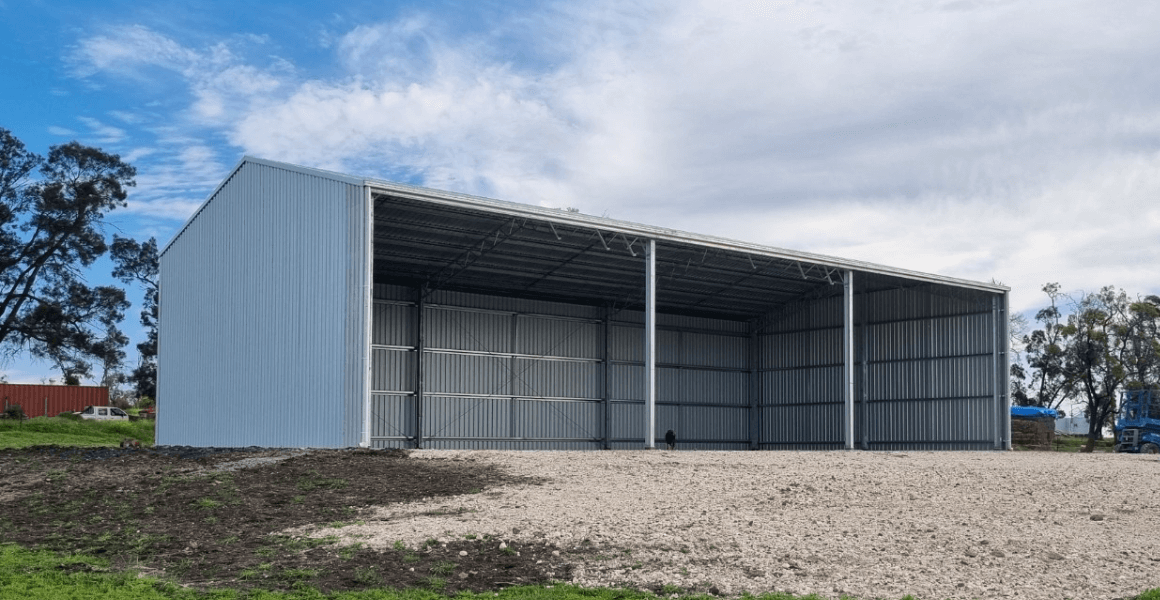How much does a hay shed cost?
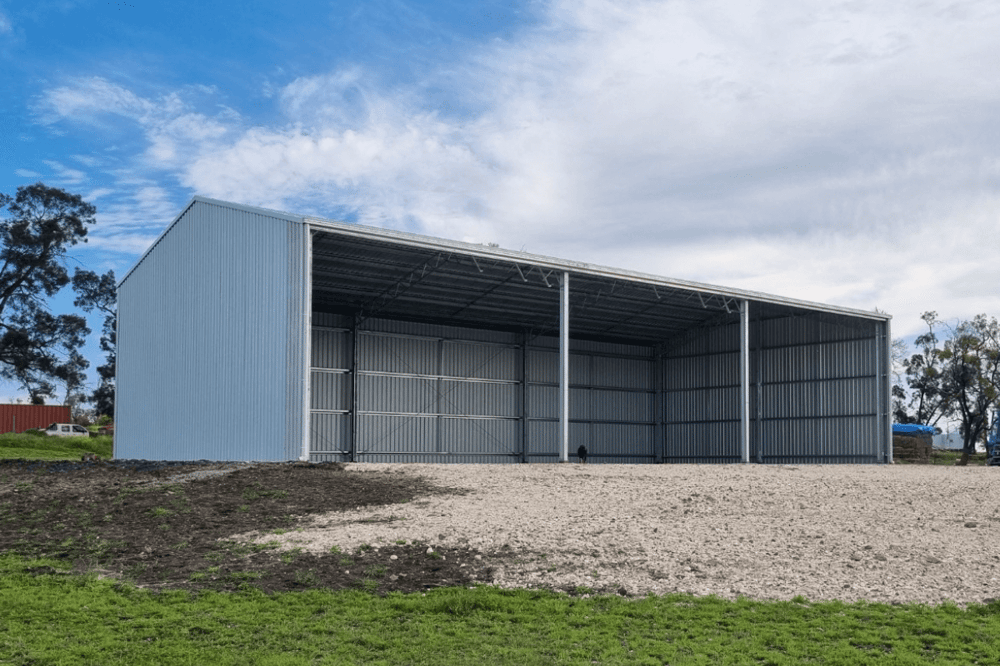
For farmers, the right hay storage is game-changing. Not only does dry hay keep livestock happy and healthy, but a well-designed hay shed will also be more cost-effective in the long term.
From size and span to future savings, there are several key factors that will influence the cost of a hay shed. To help you plan yours, we’ve covered each of these variables and the corresponding prices of different hay sheds below.
What influences the cost of a hay shed?
Before you can determine the price of your new hay shed, you need to decide on a few main specifications, including the size, span, and additional features you require. Depending on your requirements, costs can quickly add up so it’s important to understand what you need, and what you don’t, plus additions that could significantly impact the price.
Hay shed sizes
As a general rule, the bigger the shed, the higher the price will be, simply because more labour and materials are required. The key is to strike a balance between the height, floor area, and amount of hay you expect to store. Firstly, think about how much hay will need to fit inside the shed all at once. The following estimates will provide a good starting point.
1,000 bales
If you only expect to store 1,000 bales at the most, a 32m by 18m shed should be sufficient. This will suit smaller farms or farmers who wish to have multiple separate sheds.
2,500 bales
For bigger farms, a common hay shed size is 48m by 24m which will allow you to fit 2,500 bales at the height of the season.
5,000 bales
For larger farms requiring 5,000 bales, a 96m by 24m shed will be ideal. Please note that for sheds of this size, you will need to install a water tank in case of a fire which can add over $20,000 to the shed price.
20,000 bales
For hay export, a 160m by 45m shed is designed to store 20,000 bales. However, it might be wise to opt for a few smaller sheds rather than one large one to protect your hay. This ensures that you and your farm are covered should a hay fire occur, as a portion of your crop will be kept safe.
Shed span and bay sizes
The width and bay size of your shed will also have a major impact on the price because it will affect the fabrication time and engineering requirements.
Bay size
Generally, 8m bay sizes are best for hay storage because they allow enough room to stack three big square bales while still leaving space for airflow, which is very important in reducing the risk of spontaneous combustion. On top of that, you will need to consider the ease of loading and unloading the bales, which will impact ongoing labour costs.
Long vs wide span
For the most part, wide sheds are more expensive than long sheds because they take longer to build and are constructed with heavier steel to ensure that the beams are supported. With a longer shed, you can store just as much hay, but with fewer engineering challenges.
From one size to the next, engineering is subject to change. As an example when comparing 15m with 18m span sheds and also 24m and 30m span sheds, the price can increase significantly, for a little extra width. For this reason, you will often be better off opting for multiple smaller span sheds than one big one as they require less engineering, which will reduce the cost.
Costs over time
While it can be tempting to opt for a smaller shed to lower the cost, you also need to think about the future savings that come with a more efficient design. Across Australia, average shed sizes are on the rise and there’s a reason for that – they are economical.
With a lower cost-per-bale, a larger shed can often work out to be more cost-effective. This comes down to the bay spacing and, in particular, the number of purlins required to support the structure. For example, an 8m bay and an 8.5m bay will have the same number of purlins, meaning you can store more hay or have more room to access it.
Essentially, the upfront cost is higher but the ease of use and flexibility of a larger shed will pay off in time.
Want to know how much your future shed will cost? Request a free no-obligation quote here >>
Hay shed prices
Now that you know the different variables that impact hay shed pricing, you will have a better idea of what kind of shed you require. Whether it be one large shed or multiple smaller sheds, the following prices will give you an indication of how much you could expect to pay for a standard hay shed in Australia.
40m x 18m hay shed
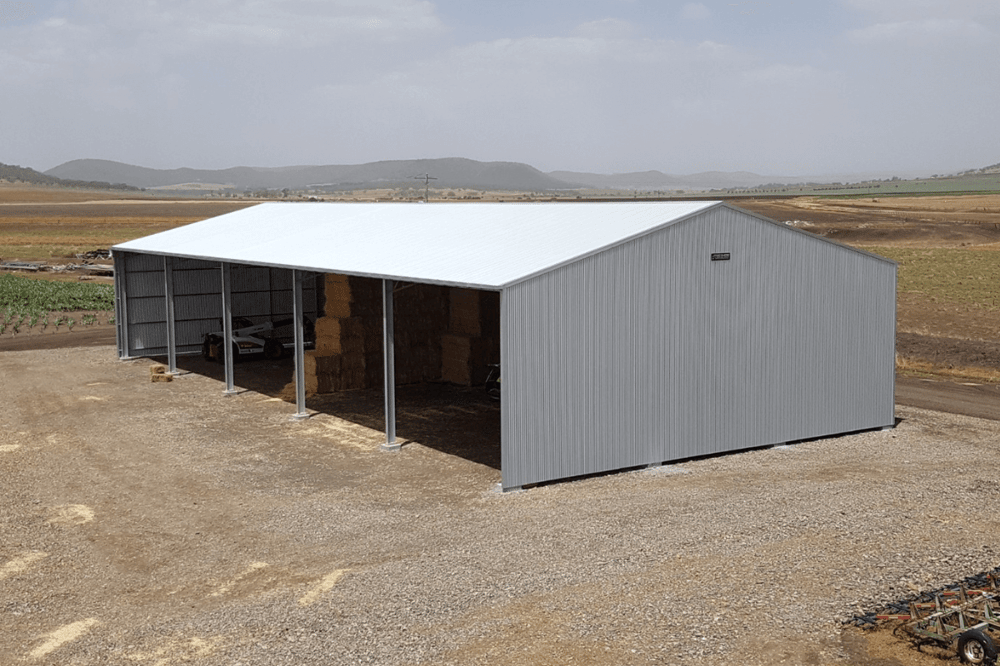
For a hay shed measuring 40m long by 18m wide, you can expect to pay approximately $130K to $150K.
For reference, we manufactured the hay shed above, complete with three enclosed walls and five 8m bays. With guttering, easy access for machinery, and sturdy steel walls, this shed is perfect for storing this farmer's hay all-year-round.
32m x 18m hay shed
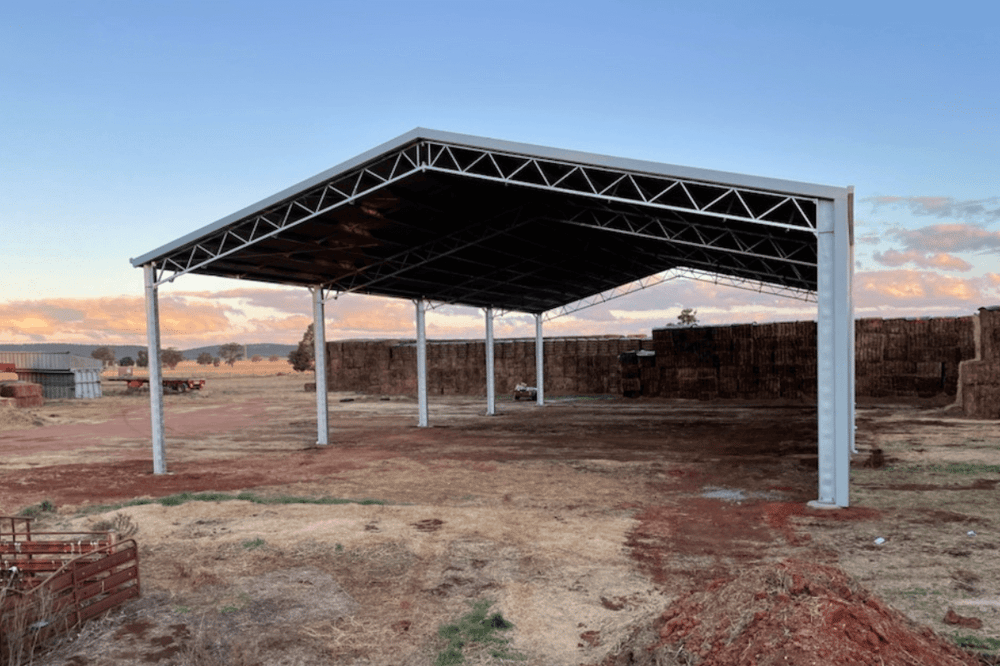
The cost of a 1,000 bale shed measuring 32m long by 18m wide ranges from $110K to $130K. A standard design includes can include enclosed walls and four bays of 8m each.
For a real-world example, check out the above hay shed we completed recently. Featuring four 8m bays, this hay shed is designed to be completely open for ease of access. Come harvest time, this farmer will have no problems loading their hay!
24m x 18m hay shed
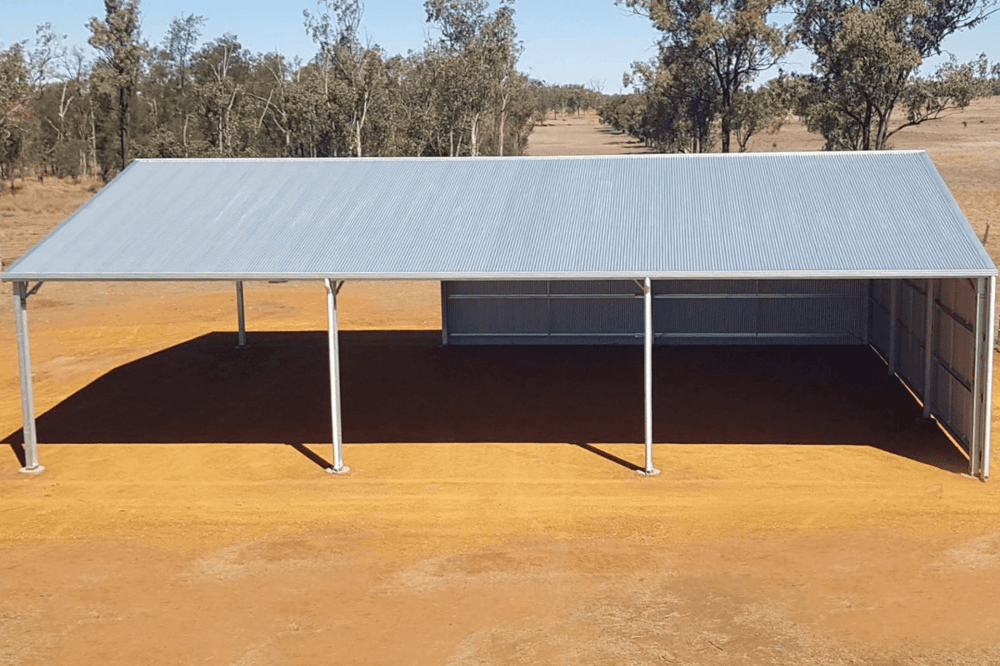
For a small 24m by 18m hay shed, you can expect to pay between $95,500 to $110,000. Standard designs like the finished shed above feature three 8m bays and semi-enclosed walls to reduce the chance of moisture buildup.
How to save money on a hay shed
To keep the cost of your new hay shed down, we have a few industry tips to help you. On top of those key factors mentioned above, why not consider the following cost-saving ideas?
Get a roof only shed – sheet the walls down the track
While you might be concerned about protecting your hay from the elements, it might be worth leaving some of the walls for a later date. When building a shed, size and efficiency are the top priorities so if you need to save money now, the wall sheeting can come after.
We can allow for this by including wall cleats during production so that when you have the extra funds, the sheeting can easily be attached. In the meantime, the roof and walls you do install should be enough to protect your hay from the worst of the weather!
Consider sheeting infills
To strike a balance of proper airflow and protection from the elements, you might benefit from using infills instead of entire walls. While some farmers will want the gables to be completely enclosed, some may only need partial cover. In these cases, infills provide an affordable and effective solution.
Reduce the span
As we have mentioned previously, the bay size and span of your shed have a direct impact on the price of your hay shed. If this is a major concern for your farm, we recommend reducing the span and increasing the quantity of bays instead. This way, you can still store your hay efficiently without the added costs of engineering and materials.
If you need to maintain the quality of your hay, the friendly team at ABC Sheds can help. Whether you need a standard design or a customised solution, our range of hay sheds caters to all farmers' needs and budgets.
-1.png?width=3641&height=660&name=abcshedstransparent2%20(1)-1.png)
